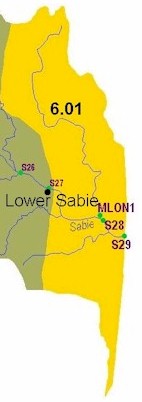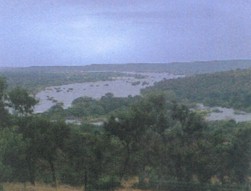|
Present Ecological State
The riparian zone is
natural
and the in-stream habitats and biota
natural
to
good .

|

Drivers of Ecological Change (Land-use activities)
Conservation and eco-tourism are again the dominant activities. The Corumana Dam inside Mozambique pushes up into the Kruger National Park, resulting in reduced velocity of flows, damping of seasonal flow fluctuations and increased deposition of sediments. This, in turn, leads to a loss of natural habitats, which has an effect on the health of especially the fish population.
Desired Ecological State and Response by Resource Managers
Due to the conservation importance of this region, the Sabie should be maintained in a
natural
state.
|























